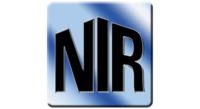Whether an insurance restoration business is large or small, there is one factor that stands above all others in determining the health of that company: the ability of the business owners to manage cash flow. Cash flow is the Achilles’ heel of the restoration contractor – the one area where a business is always vulnerable.
Through the years I have seen more than a few businesses run out of cash even when they had more work than they could handle. One day the owners would wake up to discover that their line of credit was maxed out and they had $800,000 of their own money tied up in other people’s properties. Hitting that wall is painful at best; at worst, it is a one-way ticket to bankruptcy.
We are often our own worst enemies when it comes to managing cash flow. We want to be the good guys who take care of problems for distressed property owners whose lives are turned upside down by a disaster. We commit too much of our own money to get a job underway, confident that the insurers and the mortgage companies will reward our initiative by turning around payments quickly. We fail to require sufficient amounts of money when a job starts. And with our problem-solving mindset, we remove the property owner’s sense of urgency in getting reimbursements by saying that we will deal with the insurance company directly.
Any restoration contractor who has operated in this fashion knows the pain of delayed payments. Perhaps we ask for a third at the start of the job, a third at the midpoint and a third upon completion. Because the insurance payments must be co-signed by the mortgage company, payment can be delayed for weeks or months. If the insurer sends a payment of one-third to the lender, that lender may send one-third of the original amount to the contractor – a figure far short of what the contractor has already invested in the job.
Does this sound familiar?
If you allow this to happen, you are, in effect, becoming the financier of the insurance industry and mortgage lender. And I don’t know of many restoration contractors who have pockets deep enough to be in that position. Fortunately the method of financing restoration jobs has begun to change with a new generation of business owners.
More contractors today are drawing up contracts that make the property owners responsible for payments, thereby shifting the responsibility for collecting reimbursements to the policyholder. It is important for a contractor to help the property owner walk through the process of getting reimbursement but you can bet that it becomes more than just a casual matter for the insureds when they have committed money to the restoration work. By making the property owner responsible for collecting his or her insurance payments, the contractor avoids becoming the financier to some of the largest financial institutions in the world.
Cash flow is a gremlin that can leave a painful bite if you don’t watch the process. To ensure that you maintain a healthy cash flow, check your costs and be certain that each part of your work pays for itself with a decent profit. More importantly, get an understanding of the payment schedule before the job starts and be prepared to stop work when payment is not made. Being hard-nosed may not be in your nature, but it is necessary for the survival of your business.
NIR: Cash Flow Woes
Looking for a reprint of this article?
From high-res PDFs to custom plaques, order your copy today!



